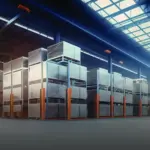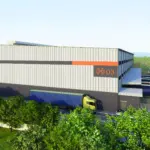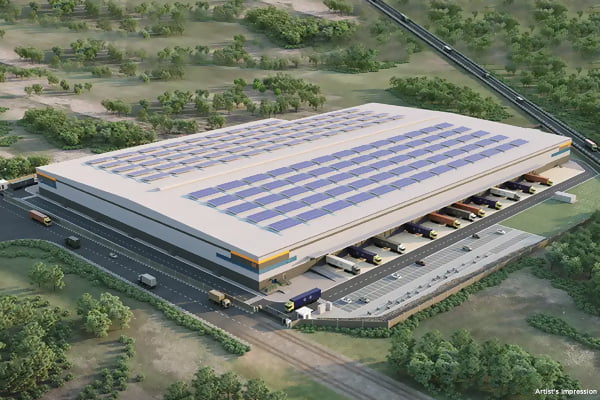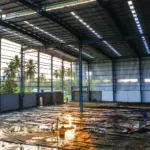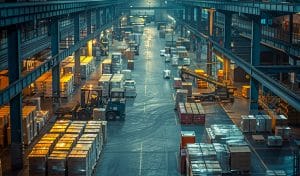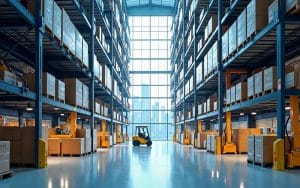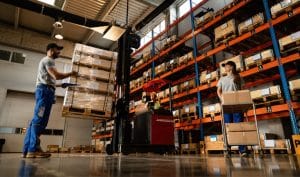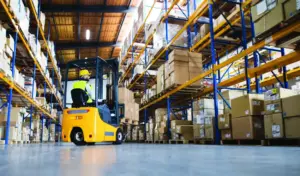Warehousing companies in India have evolved significantly in recent years, and the future of warehousing promises to be even more transformative. With the rise of e-commerce and the increasing demand for faster and more efficient delivery, warehouses must adapt to stay competitive. In this blog post, we’ll explore the future of warehousing, including the latest technology trends and the evolution of warehousing as a whole.
Table of Contents
ToggleFuture Warehousing Technology
- AI and Digitalization
Artificial intelligence (AI) and digitalization are transforming the way warehouses operate. With the help of AI-powered systems, warehouses can optimise their operations, from inventory management to order fulfillment. AI can also help warehouses identify potential operational issues before they occur, allowing for proactive measures to be taken to prevent downtime.
- On-Demand Warehousing
On-demand warehousing is a concept that allows businesses to rent warehouse space as needed. This is particularly beneficial for businesses with fluctuating inventory levels or those that require additional space during peak seasons. On-demand warehousing can help businesses reduce their overhead costs and improve their operational efficiency.
- Smart Warehousing
Smart warehousing involves the use of various technologies such as Internet of Things (IoT) sensors, RFID tags, and cloud computing to streamline warehouse operations. By leveraging these technologies, warehouses can optimise their inventory management, reduce waste, and improve overall efficiency.
Warehousing Evolution
The evolution of warehousing has been significant over the years. In the past, warehouses were typically large, manual operations, with employees moving inventory by hand. Today, however, the use of automation, robotics, and other advanced technologies have transformed the way best warehouse storage systems operate.
One of the most significant changes in warehousing has been the adoption of automation. Automated systems, such as conveyor belts and automated storage and retrieval systems (AS/RS), can help reduce the need for manual labour and improve operational efficiency. Robotics is another area where warehouses have seen significant advancements, with robots being used for tasks such as order picking and palletizing.
Another significant change in warehousing has been the use of data analytics. By leveraging data, warehouses can optimise their operations, reduce waste, and improve efficiency. Data analytics can also help warehouses identify potential issues before they occur, allowing for proactive measures to be taken to prevent downtime.
Future of Warehousing
The future of warehousing promises to be even more transformative, with the continued adoption of advanced technologies and the rise of e-commerce driving innovation. One of the most significant areas of development is in the use of drones for order fulfillment. Drones can significantly reduce the time it takes to fulfill orders, particularly for small, lightweight items.
Another area of development is in the use of augmented reality (AR) and virtual reality (VR) for warehouse training and operations. AR and VR can provide employees with a more immersive and interactive training experience, reducing the time it takes to train new employees and improving overall efficiency.
Finally, the rise of sustainability is also driving innovation in the warehousing industry. With the increasing demand for environmentally friendly practices, warehouses like Hiranandani Industrial Parks are exploring ways to reduce their carbon footprint, from the use of renewable energy sources to the adoption of more sustainable practices.
Conclusion
The future of warehousing promises to be even more transformative than it is today, with the continued adoption of advanced technologies and the rise of e-commerce driving innovation. AI and digitalization, on-demand warehousing, and smart warehousing are just a few of the trends that are shaping the future of warehousing.
FAQ
Q. What is the future of warehousing?
A. The future of warehousing is expected to be driven by the increasing use of automation, robotics, and artificial intelligence (AI). These technologies are being used to enhance efficiency, accuracy, and safety in warehouses. Warehouses will also become more connected, with the use of sensors, IoT, and cloud computing to collect and analyse data. Additionally, the growth of e-commerce is expected to drive the need for more efficient and flexible warehousing solutions, such as micro-fulfillment centres and last-mile delivery hubs.
Q. What is warehouse modernization?
A. Warehouse modernization refers to the process of updating and upgrading traditional warehouses to incorporate new technologies, processes, and strategies that enhance efficiency, accuracy, and safety. This may involve the use of automation, robotics, and AI to streamline operations and reduce labor costs. Modernization may also involve the implementation of lean management principles, the use of data analytics to optimise operations, and the adoption of green technologies to reduce environmental impact.
Q. What are the emerging trends in warehousing?
A. Some of the emerging trends in warehousing include the use of robotics and automation to streamline operations and improve efficiency, the adoption of cloud-based software solutions to manage inventory and logistics, the integration of sensors and IoT devices to collect data and improve visibility, and the use of sustainable technologies to reduce environmental impact. Other trends include the growth of e-commerce and the need for more flexible and scalable warehousing solutions, the rise of micro-fulfillment centres for faster delivery, and the increased use of artificial intelligence to optimise supply chain operations.

